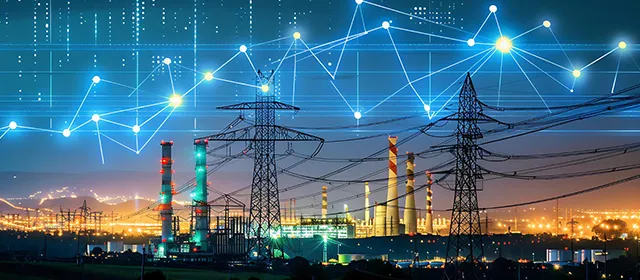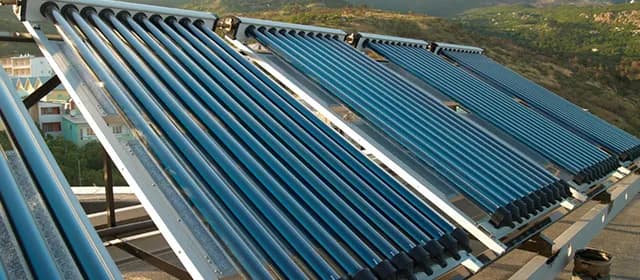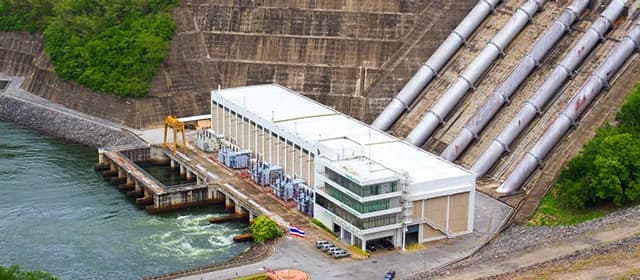The transition toward renewable energy requires not merely deployment at scale but continuous technological innovation. Solar photovoltaics, wind turbines, and hydropower systems have evolved significantly over the past decade. Improvements in materials, design, control systems, and integration strategies enhance efficiency, reduce costs, and increase system resilience. This article analyzes recent advances in solar, wind, and hydro technologies, explores market and policy drivers, and assesses how innovations impact deployment and grid integration. According to Kings Research, the global power generation market will reach USD 2,439.33 billion by 2031, growing at a CAGR of 6.25% from 2024 to 2031.
Tracking Global Renewable Deployment Trends and Their Implications for Energy Transition
Global capacity additions in 2024 reached record levels, with solar and wind accounting for 96.6 percent of all new renewable generation additions. Solar expanded by 32.2 percent year on year to reach 1,865 GW installed capacity. Wind capacity grew 11.1 percent in the same period. Those figures reflect the continued dominance of solar and wind in the transition (Source: www.irena.org).
In the United States, renewable energy’s share of net electricity generation rose to 25.7 percent in 2023 from 7.8 percent in 2001. Coal’s share of generation declined from 51 percent to 15 percent over that span.
Those macro trends underscore the imperative for technology innovation that enables deeper integration, lower cost, and grid flexibility.
Solar Innovations
- High-Efficiency Cells and Tandem Architectures: Crystalline silicon (c-Si) remains dominant in commercial solar modules, but improvements in cell efficiency continue. Manufacturers are integrating passivated contacts, advanced surface texturing, and heterojunction layers to push efficiencies closer to theoretical limits. Tandem cell architectures, stacking perovskite or other absorber layers atop silicon, seek to push efficiency well beyond conventional limits. Recent small-scale demonstrations have achieved perovskite/silicon tandem efficiencies exceeding 30 percent.
- Cost Reductions and Supply Chain Advances: In the first half of 2024, the United States produced 4.2 GW of PV modules, representing a 75 percent year-on-year increase. Module pricing trends also moved downward. In Q2 2024, U.S. module prices fell by 6 percent quarter-over-quarter and 16 percent year-over-year, landing near $0.31 per watt (dc). The Investment Tax Credit and other incentives under the Inflation Reduction Act have spurred supply chain investment and domestic manufacturing.
- Solar Thermal, Energy Storage, and Integration: Research under programs such as the Solar Program’s Small Innovative Projects in Solar (SIPS) advances emerging solar concepts, including concentrating solar power with integrated thermal storage or solar fuels. Hybridization with energy storage, smart inverters, and grid control software helps solar systems shift from variable generation toward dispatchable assets. Integration of bifacial modules, tracking systems, and dynamic shading control further increases the capacity factor.
Wind Innovations
- Larger Turbines and Taller Hub Heights: Utility-scale wind turbine design continues trending upward. Hub heights for land-based turbines grew by 83 percent since the late 1990s, reaching roughly 103.4 meters in 2023. Higher hub heights tap stronger, more stable winds and reduce turbulence effects. Offshore turbines further push design boundaries in rotor diameter, foundation design, and floating platforms.
- Offshore Wind Scaling: The U.S. offshore wind pipeline grew 53 percent year over year to a potential capacity of 80,523 MW as of mid-2024. The first commercial U.S. offshore wind project, South Fork Wind Farm (132 MW), began partial operation in late 2023 and achieved full commissioning in March 2024. Capital flows into ports, vessels, supply chain, and transmission exceeded $2.1 billion in 2023 to support marine wind deployment.
- Control Systems, Predictive Maintenance, and Recycling: Advances in blade aerodynamics, materials, and computational fluid dynamics models enhance rotor performance. Condition monitoring, predictive maintenance using machine learning, and real-time control reduce downtime and extend life. End-of-life recycling innovations permit the recovery of rare earths, composites, and metals. DOE reports that up to 90 percent of wind turbine mass may be recyclable.
Hydropower Innovations
- Low-Head, Run-of-River and Modular Hydro: Traditional large dam projects face constraints due to environmental impact and cost. Innovations in low-head and run-of-river turbines permit power generation with minimal storage and environmental disruption. Modular hydropower units installed in existing infrastructure (canals, pipelines, irrigation channels) leverage hydraulic head without new dams.
- Pumped Storage and Hybrid Systems: Pumped storage hydro remains the largest grid-scale storage technology globally. Technical advances improve cycle efficiency, flexible operation, and integration with intermittent renewable supply. Hybrid systems combining floating solar on reservoirs and hydropower plants optimize land use and responsiveness.
- Advanced Turbine Design and Control: New turbine designs reduce cavitation, fish mortality, and sediment erosion. Adaptive control systems manage variable water inflow, shifting generation to align with demand. Digital twins and real-time monitoring support operational optimization and predictive maintenance.
Cross-Cutting Innovations and System Integration
- Grid Integration, Storage, and Flexibility: Renewable generation must interface with storage, demand response, and grid control to deliver reliability. Battery storage deployment must expand in tandem. In 2024, U.S. battery storage capacity is projected to nearly double. Smart inverters, advanced forecasting, and dynamic dispatch algorithms enhance system flexibility.
- Hybrid Projects and Co-location: Co-location of solar, wind, storage, and hydro sources at a site maximizes utilization and balances intermittency. Hybrid microgrids serve remote or off-grid regions efficiently. Water-solar tandem plants help control reservoir levels while generating electricity.
- Digitalization, AI, and Predictive Analytics: Digital infrastructure underpins modern renewable generation. AI models optimize performance, detect faults early, and adapt to environmental conditions. Digital twin simulations inform predictive maintenance and system upgrades.
- Financing, Policies, and Market DesignL: Government funding, subsidies, tax credits, and procurement mandates accelerate deployment. In the U.S., DOE announced “clean energy accomplishments 2024,” highlighting investments across solar, wind, storage, and manufacturing. Market mechanisms such as capacity markets, ancillary service markets, and renewable energy certificates reward flexibility and integration.
Market Players and Strategic Projects Defining Renewable Expansion
Neoen, a French renewable energy company, operates an 8.9 GW portfolio combining solar, wind, and storage. The company pursues Agile deployment of combined technologies to improve capacity utilization and balance intermittency.
Enel Green Power presented its 2025–2027 strategic plan in late 2024, committing about €12 billion in investment. The plan targets capacity addition of roughly 12 GW and emphasizes a technological mix with over 70 percent onshore wind and dispatchable elements.
In the U.S., states such as New York awarded contracts for large-scale renewable capacity. In December 2024, New York’s energy agency executed contracts for 23 land-based renewable projects totaling over 2.3 GW capacity, expected to reduce CO₂ emissions by about 2.3 million metric tons annually (Source: www.nyserda.ny.gov). At the federal level, DOE’s EERE Investment Snapshot 2024 shows how sustained funding across solar, wind, storage, and grid technologies supports innovation deployment.
Challenges and Constraints
Intermittency and variability of solar and wind output pose integration stress. Lack of storage or demand flexibility forces curtailment or over-generation in certain hours. Transmission bottlenecks constrain the delivery of power from resource-rich regions to demand centers. Environmental constraints, land use conflicts, permitting delays, ecosystem impacts, and community acceptance slow project development. Water availability variations may affect run-of-river or pumped storage hydro in some regions. Supply chain constraints for critical materials (rare earths, silicon, steel, composites) may delay component manufacture.
Cost declines in many technologies remain uneven across geographies. Regions lacking infrastructure or financial weighting struggle to adopt advanced systems. Policy and market designs may lag behind technical potential, limiting revenue models for flexible generation or storage.
Conclusion
Innovations in solar tandem cells, perovskite interfaces, and transparent modules may push module efficiencies further. Lightweight, flexible, or building-integrated photovoltaics will expand deployment in novel settings. In wind, floating offshore, larger rotors, next-generation materials, and wind farm optimization will reduce the cost per megawatt-hour. Hydropower will evolve through modular, low-impact, and hybrid systems. Integration across multiple sources, storage, digital control, and demand response will become standard.
Digital, AI, and grid control advancements will allow renewable generation to operate near dispatchable standards in many regions. Cross-border and regional grid interconnections will help smooth variability across geographies. Continued investment, policy support, and research funding transport technology from the laboratory to large scale.
Renewable generation now confronts the challenge of transitioning from niche to backbone. Ongoing innovations in solar, wind, and hydro systems create pathways for deeper decarbonization, greater reliability, and energy resilience. The energy transition depends not only on scale but on intelligent, adaptive technologies that maximize performance, minimize cost, and integrate seamlessly into evolving grids.




